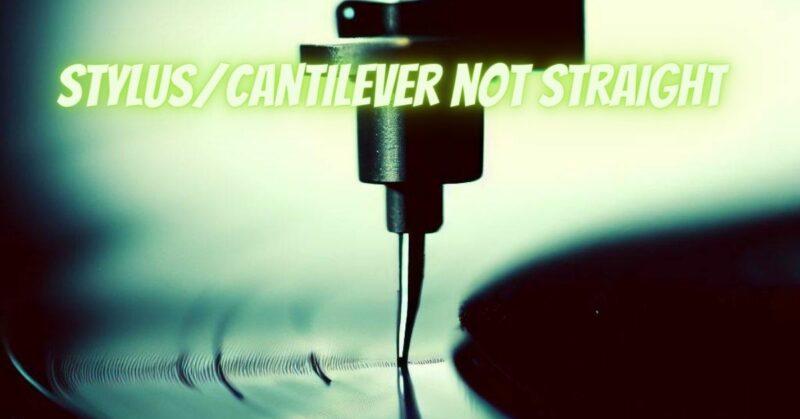The stylus, also known as the needle, and its accompanying cantilever are pivotal components of your turntable’s cartridge. They work in tandem to extract the intricate musical details from vinyl records. When these elements are not straight or misaligned, it can have a significant impact on your listening experience. In this article, we’ll explore the reasons why a stylus and cantilever may not be straight, the consequences of misalignment, and possible solutions to address this issue.
Understanding Stylus and Cantilever Misalignment
To comprehend the implications of a stylus and cantilever that are not straight, let’s examine their roles:
- Stylus (Needle): The stylus is the small, pointed tip that directly contacts the record grooves, translating physical groove patterns into electrical signals.
- Cantilever: The stylus is mounted on a cantilever, which is a slender, flexible arm. The cantilever is responsible for transmitting the stylus’s movements to the cartridge’s coils, generating electrical signals that produce sound.
Reasons for Stylus and Cantilever Misalignment
Several factors can contribute to misalignment of the stylus and cantilever:
- Accidental Damage: Mishandling or accidental bumping can cause the stylus or cantilever to become misaligned.
- Shipping and Handling: During transport or shipping, turntables and cartridges are vulnerable to misalignment, which can affect the delicate stylus and cantilever.
- Manufacturing Defects: In rare cases, a manufacturing defect in the cartridge or stylus assembly can lead to misalignment.
- Wear and Tear: Over time, regular usage and wear can result in misalignment. This is more likely in older or heavily used cartridges.
Consequences of Stylus and Cantilever Misalignment
- Tracking Issues: Misalignment can disrupt the proper tracking of the stylus within the record grooves, leading to tracking problems. This may manifest as skipping, mistracking, or even record damage.
- Distorted Sound: Misalignment can introduce audible distortions into the sound, such as popping, clicking, or crackling noises, detracting from the listening experience.
- Record Groove Wear: An improperly aligned stylus and cantilever may cause uneven wear on the record grooves, potentially harming your vinyl records.
- Reduced Sound Quality: Misalignment can compromise sound quality, resulting in a loss of clarity, dynamics, and overall fidelity.
Solutions for Stylus and Cantilever Misalignment
- Visual Inspection: Begin by visually inspecting the stylus and cantilever under magnification. Look for any visible signs of misalignment, bending, or warping.
- Professional Evaluation: If you suspect misalignment or encounter tracking issues and distortion, consider consulting a professional turntable technician or cartridge specialist. They can conduct a comprehensive evaluation and recommend necessary repairs or replacements.
- Replacement Stylus or Cartridge: Depending on the extent of misalignment or damage, it may be more cost-effective to replace the stylus or, in some cases, the entire cartridge.
- Preventive Measures: To prevent future misalignment issues, practice careful handling of your turntable and stylus. Always align the stylus properly before playback and handle your records with care to avoid mishaps.
A stylus and cantilever that are not straight can have a detrimental impact on your vinyl listening experience, affecting tracking, sound quality, and even record condition. Whether misalignment occurs due to mishandling, shipping, or wear and tear, addressing the issue promptly is essential. Visual inspection and professional evaluation can help determine the appropriate course of action, whether it involves stylus or cartridge replacement or repairs. By taking preventive measures and treating your turntable components with care, you can continue to enjoy the rich and immersive world of vinyl playback with exceptional sound quality.


